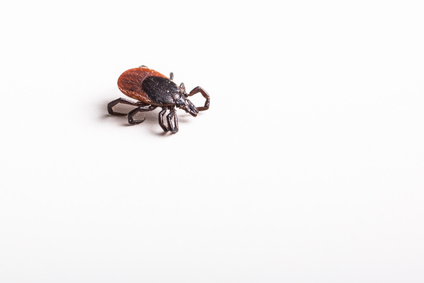Lyme Disease and Your Dog: How To Take Care Of Your Pet’s Health
- Esther M.
- Mar-22-2021
- Lyme Disease
Ticks can be a real pain for you and your household. These pests pose a threat to your health and that of your pets. Did you know that your dog faces the same risk of contracting Lyme Disease as you do? Lyme can cause untold suffering to your dog. Moreover, there is a lot you should know about how dogs can cope and the possible treatment for this health issue. The good news is that you can get some valuable information in this post. It’s a good place to begin your research on what to do as far as Lyme and your pet are concerned.
Lyme Symptoms in Dogs

It’s almost impossible to resolve a problem that you haven’t identified. So when it comes to your dog, how can you positively identify that there is an infection? What would you do need to look out for as a sign of infection by the disease-causing bacteria found in ticks? Find out in the following post:
Lyme is an infectious disease caused by bacteria called Borrelia which is most commonly carried by deer ticks. The deer tick becomes infected by feeding on infected animals such as mice, birds and deer. The infection is spread when an uninfected animal, such as your dog, is bitten by the infected tick…
In dogs, the most common symptoms of Lyme disease include lameness due to inflamed joints, swollen joints and general malaise, reduced energy or discomfort. Depression and a lack of appetite are also common symptoms of Lyme disease in dogs. In some rare cases, Lyme disease symptoms can include difficulty breathing, fever and a sensitivity to touch. Read more at Hillcrest Animals…
Treatment of Lyme Disease in Dogs

Once you suspect that your dog may have Lyme, you need to visit the vet. This will help to establish exactly what’s ailing your dog. Additionally, the right treatment will be administered to your pet.
Lyme Disease is not a death sentence if it is caught and treated in time. Treatment typically consists of a 30-day regimen of antibiotics. In the majority of cases, this is enough to beat the illness but some dogs may need longer treatment, depending on the extent of the disease.
Your veterinarian may also wish to prescribe other medications to help with persistent joint aches and fatigue while your pet’s body is fighting the illness. In general, it takes one to two months for your pet to recover from Lyme Disease. Read more at Fit Bark…
You will need to boost your dog’s diet so that the immune system gets the help it needs to combat the infection. Your vet may also help to determine the best options for your dog.
Dangers of Untreated Lyme Disease in Dogs

In the event that the Lyme infection is not found, or when the treatment is not effective, there is cause for concern. This is precisely why you shouldn’t overlook any signs of illness in your dog.
Untreated Lyme disease in dogs can lead to health complications in your pet’s critical organs, including permanent damage to your pet’s kidneys, heart or nervous system. According to veterinary experts, kidney damage is the most common complication of untreated Lyme disease and is often fatal for dogs suffering from this complication.
In some cases, dogs may also experience nervous system disorders such as seizures or facial paralysis. The severity of these complications can vary and may not be life-threatening but could affect your pet’s quality of life. Read more at Forever Vets…
You probably cringed at the thought of such health complications for your dog. Extra vigilance and caution where your dog’s health is concerned are very important. In fact, because you can’t be too careful, employing the very best tick control measures for your home is recommended.
At Backyard Bug Patrol, we have the necessary knowledge and skills to ensure your yard and home are tick-free. We leave no stone unturned. Our barrier spray program will render ticks dead on contact. It also goes deep into the foliage of your yard so these dangerous pests won’t survive. Call us today to protect your pet from Lyme disease.
